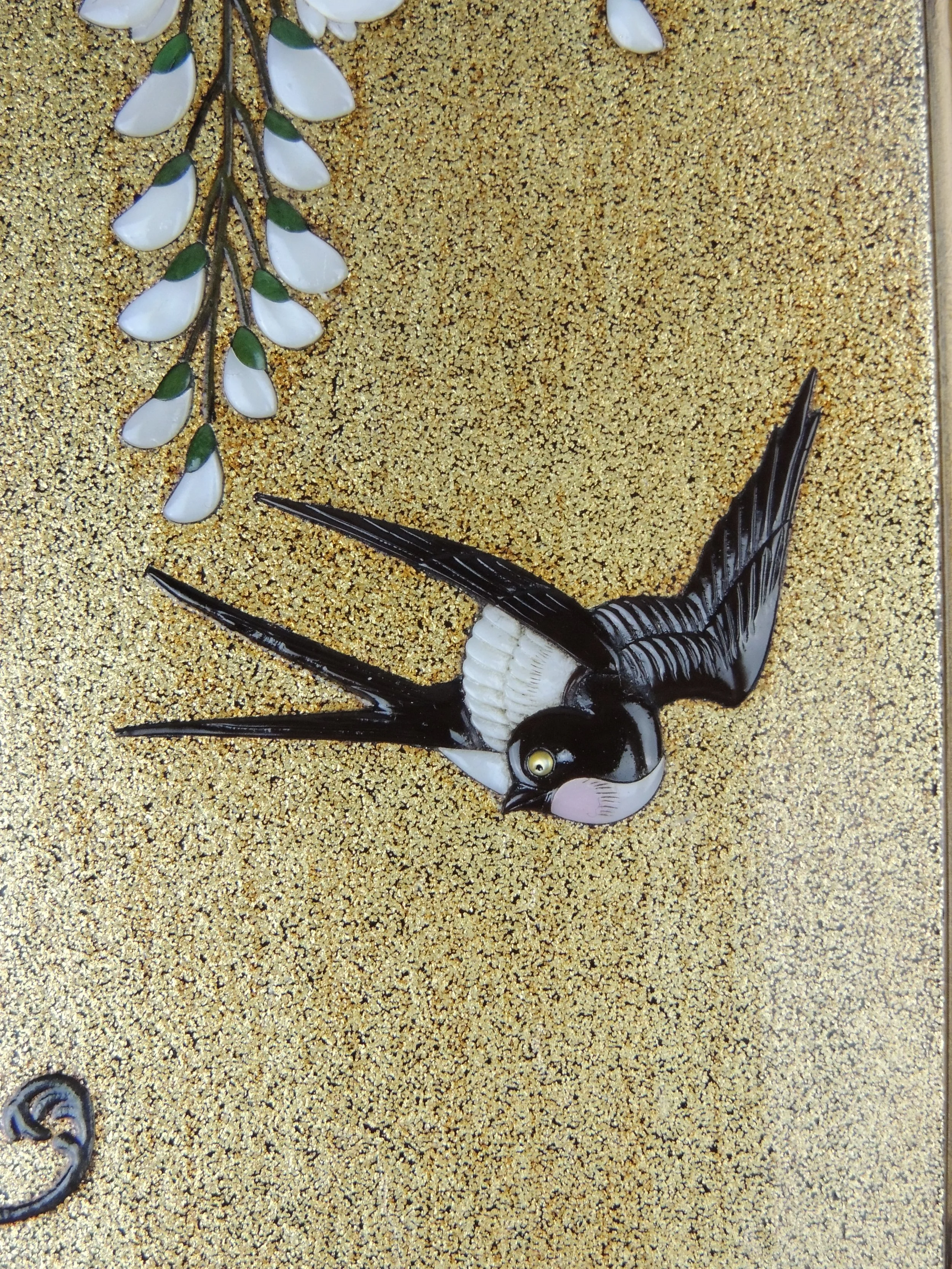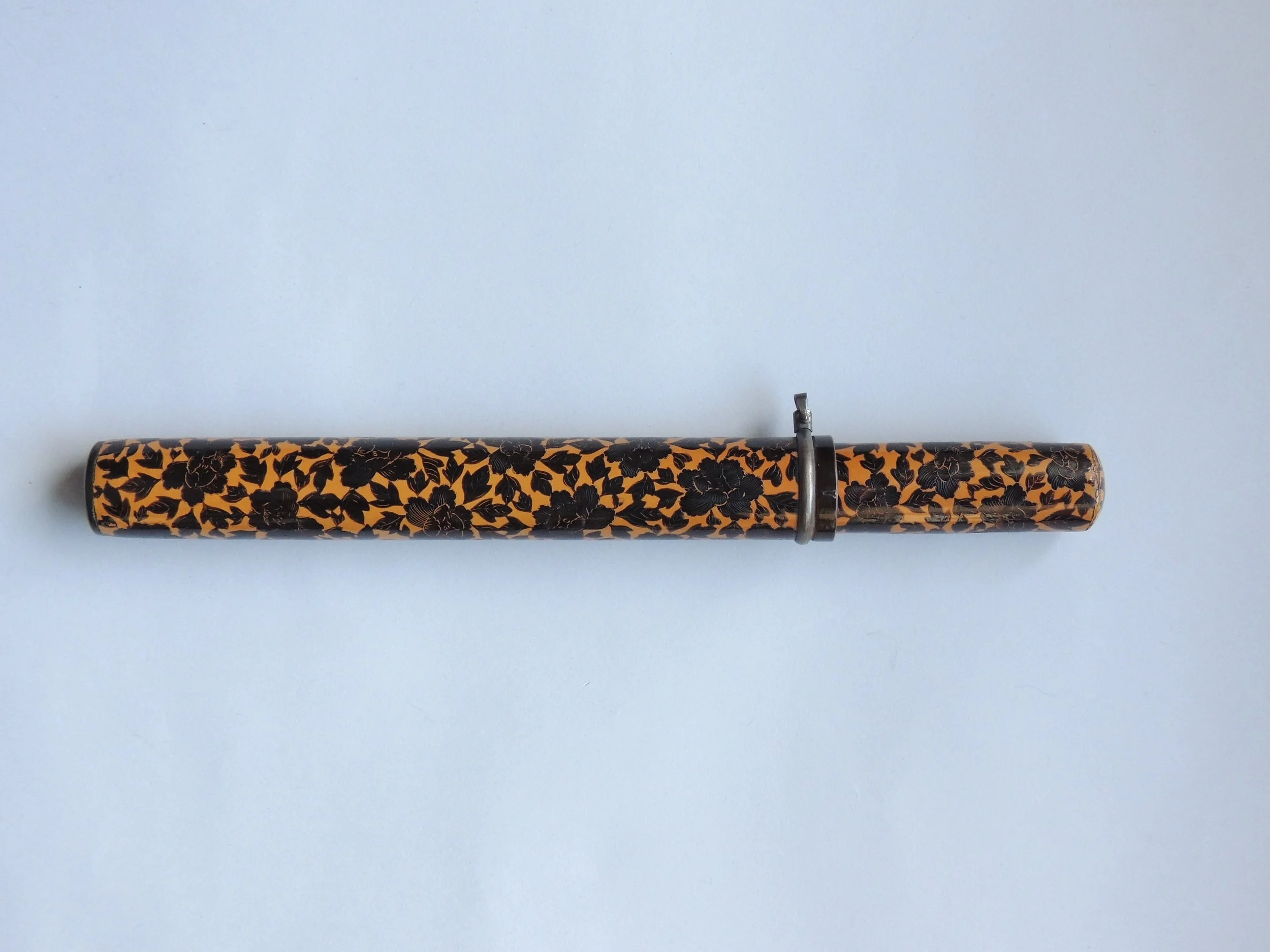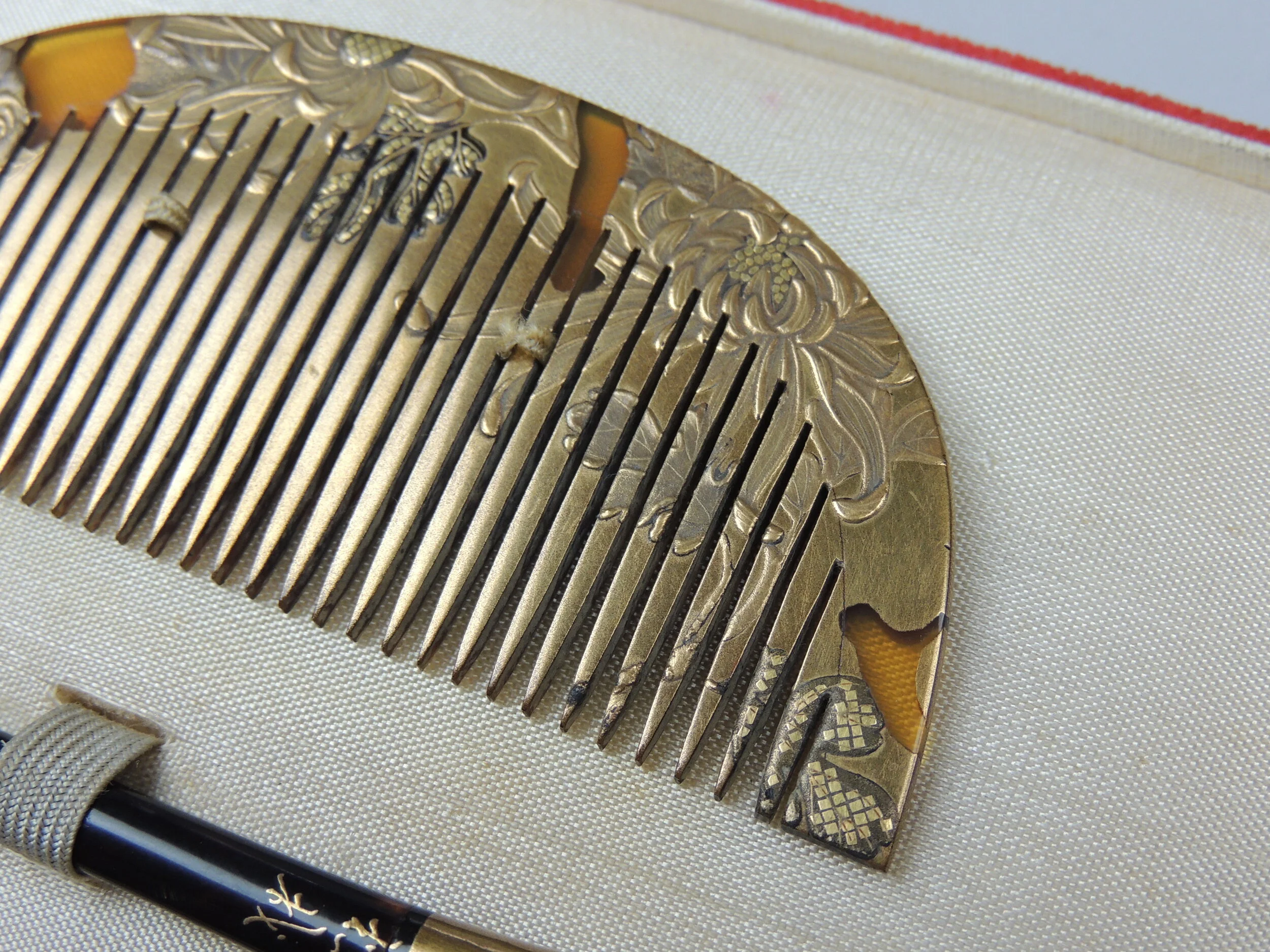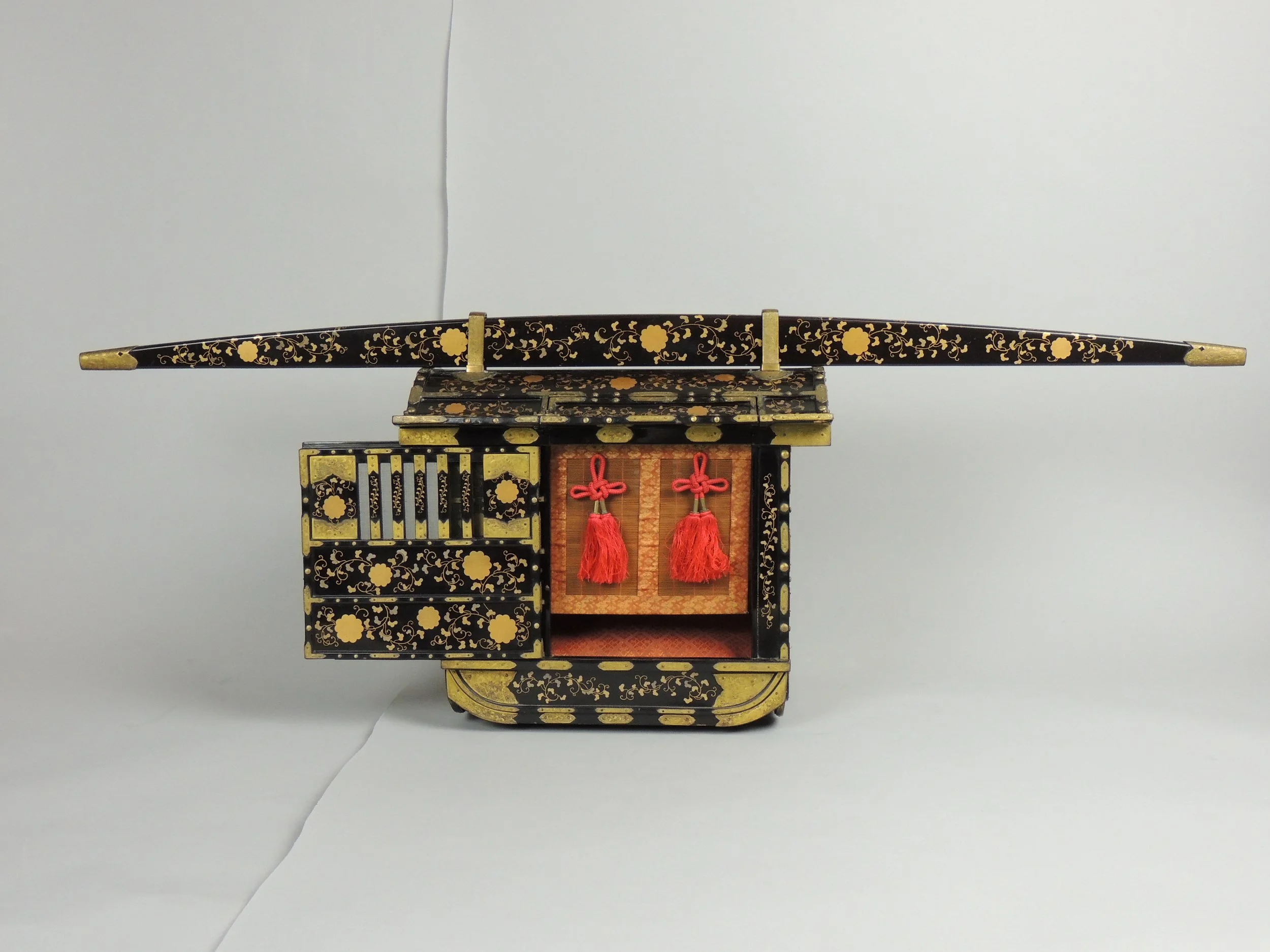Anonymous
Meiji period 19/20th century
1868-1912
Box
A large Shibayama style lacquer storage box. The exterior is decorated in nashiji lacquer inlayed in ivory, mother of pearl and tortoise shell depicting swallows flying amongst flowering wisteria. Each corner has solid silver and hand carved embellishments of floral designs.
Swallows are associated with the season of spring. A sign of good fortune and things to come. Often paired with the willow tree or in this case the mountain wisteria a spring flowering plant.
Size 330mm x 116mm x 116mm
Unsigned









